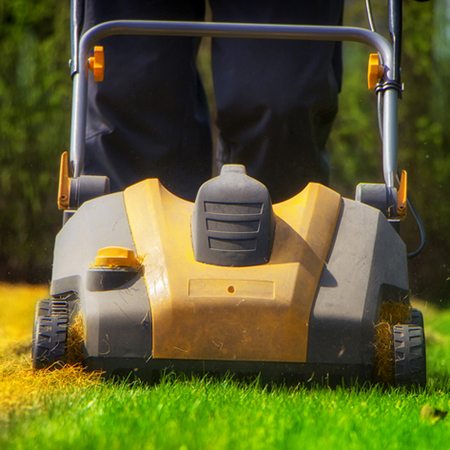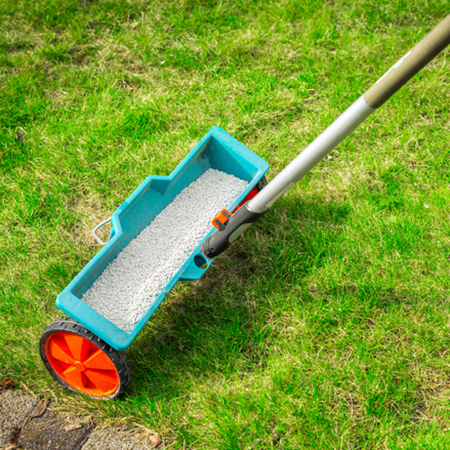Turn Your Lawn into a Lush Green Carpet
As much as the spring/summer season is meant to be the absolute best time of the year to enjoy your lawn, it can easily be the death of it.
27/10/2021
The lawn usually makes up for the largest part of most home gardens; a lush green one though complements the whole house and makes the rest of your outside area look neat. As much as the spring/summer season is meant to be the absolute best time of the year to enjoy your lawn, it can easily be the death of it.
During this season, grass undergoes the most stress: drought and hot temperatures, increased traffic from pets and kids, braais and barbecues, insects, and other garden-related diseases. Combined, all these factors can cause more wear and tear to lawns. So, how do you keep your grass green in the summer?
Follow this guide from Johanita Corbett, Buyer: Garden Nursery and Plants at Builders to discover the secret to a perfect lawn. Builders is the leader in DIY and home improvement solutions. They offer an extensive range of competitively priced garden products, and their stores have a large garden centre display for all your gardening needs.
Preparation is everything
Scarifying to remove any dead, matted grass on your lawn is the best place to start. Thatch is the dead growth that sits on top of the grass after winter and you can easily remove this by going over with a lawnmower on a low setting. This will assist in removing at least half of the thatch and then you can rake manually to remove the remaining lower levels of thatch until there is only a sparse covering of old dead grass.
Aerate heavy clay soils and lawn with a garden fork or a hollow tined fork to improve drainage and reduce waterlogging problems. If any holes appear on the lawn you can apply lawn dressing, which is a combination of sterilised soil and compost – and fill up any holes to even out the lawn.
GOOD TO KNOW: Never scarify bunch-type, cool season, evergreen grasses.
Dealing with the weeds
The best approach is to take care of weeds early and often by pulling them manually or using a weeding fork. You can also apply a selective broadleaf herbicide to remove unwanted weeds. To treat a larger area, try applying weed killer by “painting” it onto the entire affected area. It is important that you read and follow the instructions on the label or leaflet and check that the product is suitable for your grass type.
Feed your lawn good nutrients to keep it nourished
Keeping a lawn well-fertilised goes a long way towards lush, healthier green growth and regular fertilising throughout the season will increase its strength and result in even more growth that can compete against weed attacks. Not only will adding fertiliser ensure strong growth but it also provides essential nutrients that the grass needs for nourishment. While there is some debate on this matter, do not leave grass clippings in thick lawn as it could end up turning into mould, especially if the weather is warm and wet. Use a leaf blower with vacuum function or manually rake up any clippings.
Summer Damage? Rejuvenate
Just as other plants in your garden, your lawn behaves differently during each season. A cold winter combined with wet weather can kill off up to a quarter of the grass and the best time to revive your lawn is during October. Where necessary, sprinkle grass or lay new grass turf to bring the lawn back to life and improve its appearance, strength and overall health.
Follow a strict mowing schedule
The most important way to maintain an immaculate lawn is with correct and regular mowing. Throughout the summer the grass will grow unchecked and it is important that it be trimmed on a weekly basis or more if necessary, especially during warm, rainy weather. As the weather warms you should trim the lawn on a weekly basis, especially during its growth phase, and perhaps even more if it needs it. The aim is to keep it at the same height all through spring and summer.
For most lawns, this should be about 25 to 40mm high. If your lawn needs to handle a lot of wear and tear or regular foot traffic, the height is better raised to 50mm. On any areas that receive a lot of shade during the day, set the mower height at approximately 75mm as mowing too short will weaken the grass and is the quickest and easiest way of allowing weeds to become established, which destroys the lawn.
Taking care of summer pests
There will no doubt be plenty of problems with pests and diseases during the warmer months and some of these problems might result in brown spots that appear in the grass. These areas won't go away without treatment and you should begin treating the lawn in October and through until April. By carrying out regular pest control destructive insects will not reach a point where they destroy your lawn completely. It is recommended that you change any insecticide you use frequently to prevent pests from building up a resistance to any one type.
In closing, if you stick to the above programme and build a routine from it you will be able to keep a healthy lawn right into winter. Visit the Builders website or a store near you for further assistance with any garden queries or advice.
Recommended product list available from Builders:
**Please ensure to read the warning labels of chemicals and keep them safely stored away from children and pets.
● To prepare:
Fertilise with Wonder Vitaliser Lawn & Leaf Bio-Carbon Green Boost 7:1:3 (15) + C (8) SR. For a lawn dressing use the Garden Master Lawndressing.
● For weeds:
Efekto Hormoban APM and Efekto Turfweeder 457,5 SL can be mixed and sprayed over the lawn using an Efekto pressure sprayer. If you are looking for a ready-to-use product then Efekto No-Weed Lawn RTU is effective against broadleaf weeds and Efekto’s granular herbicide, Efekto Snapshot, helps to keep weed attack under control. Apply evenly at a rate of 15-20 g per m² and water afterwards. Buffalo grass is sensitive to many herbicides but Efekto Banweed MCPA is safe to use on buffalo lawns.
● Fertilizer choice:
Wonder Vitaliser Lawn & Leaf Bio-Carbon Green Boost 7:1:3 (15) + C (8) SR is an ideal fertiliser to use on all grass types. If you’d rather use organic fertiliser, Wonder Organic Granular Fertiliser Vita-Boost + C (8) promotes healthy and optimal growth, improves the structure and moisture retention of the soil, and encourages microbial activity in the soil.
● Overseeding:
You can overseed with any of the Garden Master grass seeds. For shaded areas under trees, where many other grasses would struggle, use Mayford Shade Over Lawn Seed. For reasonably shaded areas, use Mayford LM (Berea) Lawn Seed. Good preparation is key when laying a new lawn or overseeding an area. Mixing Wonder 2:3:2 (14) + C (8) SR Bio-Carbon Boost into the soil will encourage root and foliage growth.
● Treating insects:
In terms of mole crickets, Efekto Plant Protector should be directed towards young nymphs. Start treating early on more vulnerable nymphs. This is more effective than later treatments on larger mole crickets. White grubs, the larvae of chafer beetles, are common pests. Larvae feed on turf roots, causing brown, dead patches of lawn. The larvae feed from early December through mid-autumn and again in the spring. You can treat the area preventatively or curatively by sprinkling Efekto Bexadust and watering afterwards. Lawn caterpillars feed on your grass, causing ugly brown patches. To confirm a lawn caterpillar infestation, place a wet towel on your lawn overnight. If there are caterpillars clinging to the underside of the towel the next morning, you’ll know what the cause is. Treat with Wonder 4:1:1 (24) Granular Fertiliser + Insecticide, Efekto Eco Insect Control SC or Efekto Cypermethrin 200EC.







